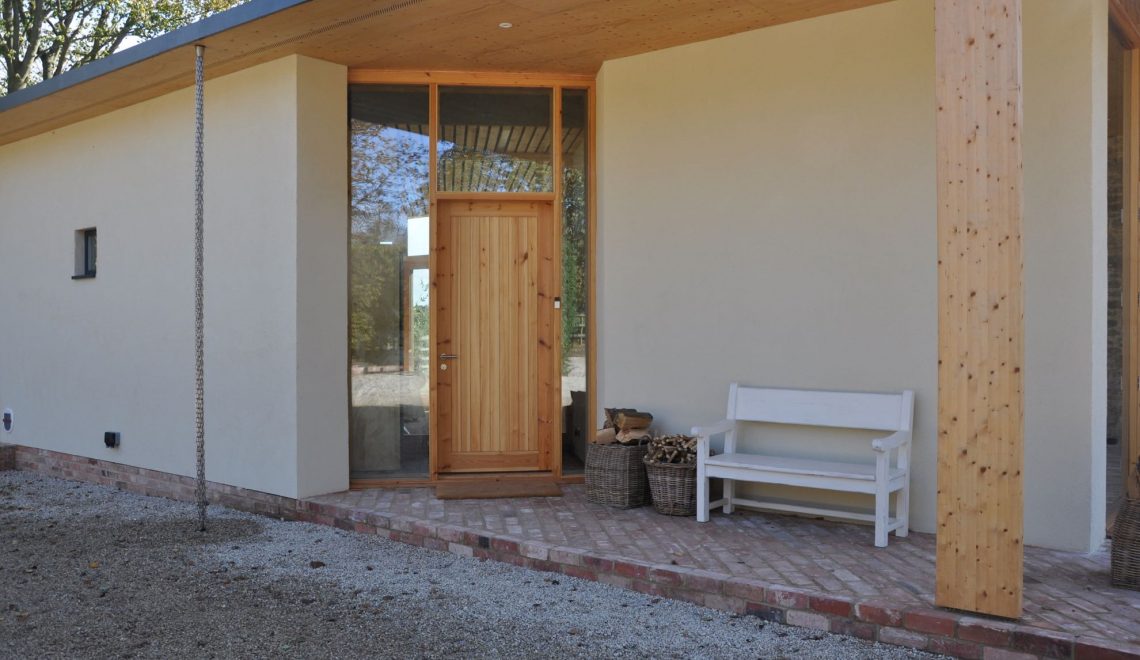Of all the things I thought people would be interested in about our eco-extension, it wasn’t the rain chains that came to mind. But, they are the feature that everyone asks about! In July last year I wrote a post extolling the virtues and beauty of rain chains but that was before we’d put them in. Now that I’m older and wiser I can give a few tips on how best to use and install them.
Rain chains are an alternative to a solid black downpipe to transport water from gutter to drain. They rely on water tension to keep the water running down the chain. They’re used in Japanese and American architecture, where roofs with deep overhangs are more common, but less in the UK and Europe. We were able to use them on our extension because the flat roof extends well beyond the walls.
A wide overhang on the roof keeps the rain chain far enough from the wall to prevent damp:

The first tip is to make sure you have enough of them. We started off with just 3 galvanised steel chains but that wasn’t enough to cope with the quantity of water coming off the roof. We ended up with a bunch of 7 or 8 chains forming one downpipe. The second tip is that you need some sort of funnel to guide the water onto the chains. You can see below that the chains fill up the whole aperture of the funnel and this was necessary to stop water splashing off the chains onto the wall.
8 steel chains with funnel at the top:

Thirdly, you need to think about what happens at the bottom of your rain chain. With one of ours it hangs into a waterbutt which has an overflow to the drain. The other one hangs into a normal land drain and we used a flexible plastic cover to conceal the top of the drain. It’s also possible to have the chain dispensing into a soak away or plant container.
Rain chain hangs into a steel water butt from Arthur Jack & Co:

Rain chains hang into a land drain with a flexible cover over the top:

Finally, make sure you secure the rain chain at the bottom because otherwise it will swing in the wind. In the water butt we drilled a hole through a brick and secured the chains to this. In the drain, we drilled holes in the sides of the drain and threaded a bolt through which we attached the chains to.



Hi
Doesn’t your water butt fill up with leaves? Or do you have a lid on it?
Also if the butt fills up how do you manage the overflow?